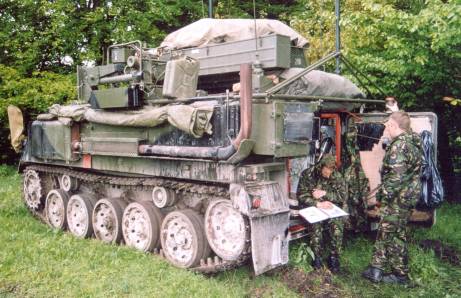ROYAL ENGINEERS FV432 ARMOURED PERSONNEL CARRIER
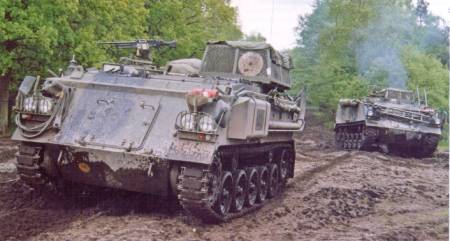
| Weight: | 15.280kg | Length: | 5.251m |
| Height: | 1.879m | Width: | 2.800m |
| Crew: | 2+10 | Maximum Road Speed: | 52km/h |
In June 1956, GKN was awarded a contract for the construction of four prototype and 10 trials vehicles from the FV420
unarmoured Light Tracked Vehicle family, to be delivered by March 1958.
In addition to this, GKN was awarded a contract for design and development of the FV430 family of armoured personnel carriers
with an initial contract for four prototypes and thirteen test vehicles for troop trials. To supplement these vehicles, Royal
Ordnance Factories, built an additional seven vehicles to GKN's design specifications.
FV432 with custom stowage boxes
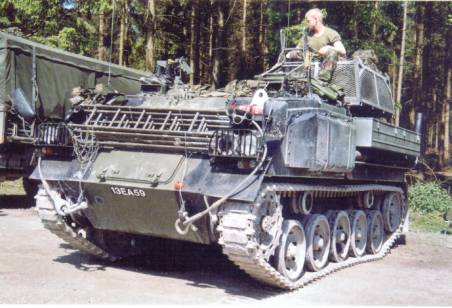
By late 1961, all of these vehicles had been delivered and, In 1962, GKN Sankey, was awarded the production contract for the
FV432 Armoured Personnel Carrier with the first production vehicles being completed at their facility in Wellington, Shropshire.
GKN was awarded design and development contracts for the FV431 Light Tracked Load Carrier, but after the trials, the production
contract was never offered, however a contract for 220 Armoured Fitters Vehicles, designatated FV434 was given to GKN in
1964.
The FV432 had three distinct types, Mk1, Mk2 & Mk2/1 and by the end of 1971, when production ceased, 3,018 had been
produced.
FV432 Armoured Personnel Carrier

The FV432's hull is made of welded steel, which provides protection against small arms fire and shell splinters. The driver
sits at the front of the vehicle on the right hand side and has a single piece hatch that opens to the left. The driver has
an AFV No. 33 Mark 1 wide-angle day periscope, which for driving at night, can be replaced by an L5A1 passive periscope. The
commander sits behind the driver and has a cupola that can be traversed through 360 degrees, with a single piece hatch with
three AFV No. 32 Mark 1 day periscopes. Mounted on the forward part of the cupola is a 7.62mm GPMG.
The engine is the left of the driver with the air inlet (forward), air outlet (rear) louvres in the roof and the exhaust
pipe on the left side of the hull. The engine is a Rolls-Royce K60 No. 4 Mark 4F 6 cylinder multi-fuel unit developing 240bhp
(although the Mk1's were fitted with a petrol engine), coupled to a General Motors Allison Division TX-200-4A semi automatic
transmission, which has built under licence by Rolls-Royce in the UK.
The troop compartment is at the rear if the vehicle with 10 (five-a-side) infantrymen seated on bench seats the run
along either side of hull. Alternatively, the seats can be folded upwards, enabling the vehicle to carry up to 3670 kg of
cargo. Access for personnel, is through a large door at the rear of hull, which opens to the right.
The suspension and is torsion and bar type, consisting of five dual rubber-tyred road wheels with the drive sprocket at the
front, idler at the rear and two track return rollers. The first and last road wheels have a friction shock absorber and
there are side skirts to protect the upper part of the track.
The vehicle comes equipped with an NBC system and the engine compartment has a Firewire detection system.
There are numerous of variants of the FV432 including an ambulance, command vehicle, 81mm mortar carrier, maintenance carrier,
minelayer, radar vehicle, and recovery vehicle.
FV432 APC with Barmine Layer


FV432 Armoured Ambulance
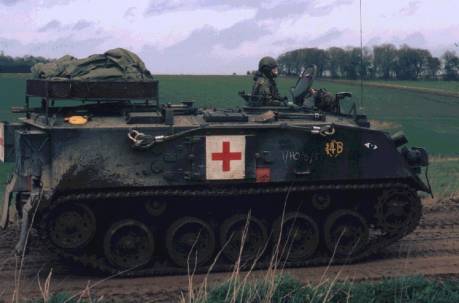
FV432 Armoured Ambulances waiting to be loaded
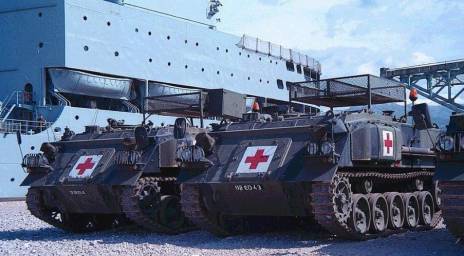
FV432 Armoured Ambulance on Transporter

FV434 Armoured Fitter's Vehicle
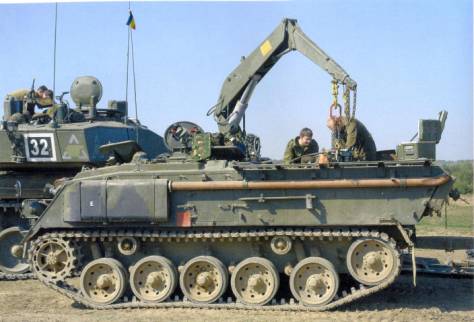

FV434's with top cover
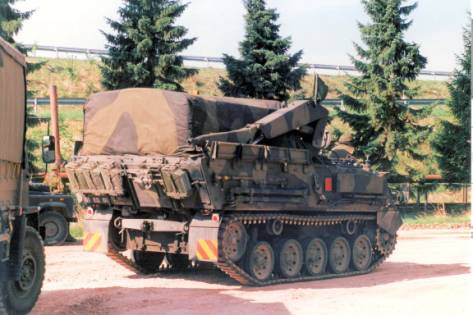
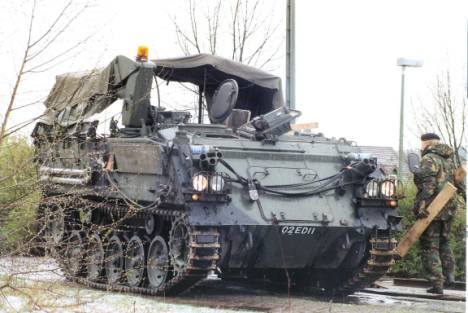
FV436 Command & Control Vehicle
